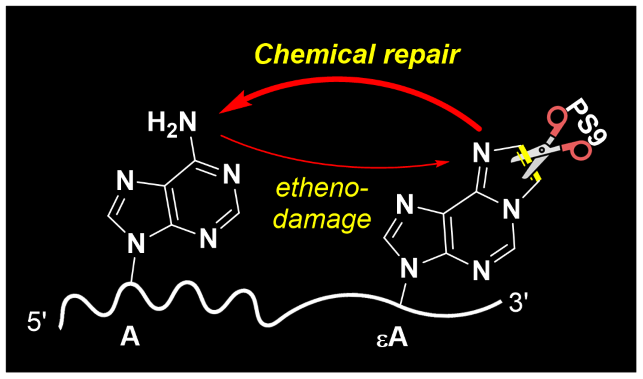How Can Vinyl-Type RNA Lesions Be Repaired? Scientists Unveil a New Chemical Strategy
Prof. CHENG Liang’s group at the Institute of Chemistry, Chinese Academy of Sciences (ICCAS) and Prof. HELM Mark at the Johannes Gutenberg University unveiled a novel chemical strategy for repairing vinyl-type RNA lesions. Using the small molecule PS9, the team developed a fast and efficient method that bypasses traditional enzymatic repair processes.
RNA molecules are constantly exposed to various damaging agents that alter their structure and function, which severely disrupt RNA stability and function, often induced by environmental pollutants and chemotherapeutic drugs, add vinyl groups to RNA bases, leading to significant interference in RNA’s stability and molecular interactions. These lesions have been linked to diseases like cancer and neurodegeneration. Unlike DNA or protein damage, no effective enzymatic repair mechanism exists for these complex RNA modifications—until now. adds extra pieces to RNA bases, making it hard for RNA to do its job properly. These lesions are tricky because our cells don’t have a good way to fix them.
The typical response to RNA damage is the degradation of the damaged molecule, followed by transcription and modification, which is a slow and energy-demanding process. In contrast, Prof. CHENG Liang and his colleagues have developed a chemical solution using PS9, which directly repairs these complex lesions. “This offers a significant advantage in terms of speed and precision compared to traditional methods.” said Prof. CHENG Liang.
PS9 uses a light-driven Paternò–Büchi reaction to selectively target εN-type lesions, initiating a series of chemical transformations to restore the RNA. Notably, PS9 repairs εA and εC lesions without affecting other RNA modifications like m6A or εG, demonstrating its high specificity. In tests with Escherichia coli cells, PS9 efficiently repaired εA lesions caused by chloroacetaldehyde (CAA) stress, providing a promising new tool for therapeutic interventions.
This breakthrough opens up new possibilities for treating diseases linked to RNA damage, where conventional repair pathways fall short. Researchers are now exploring the broader applications of PS9 as a targeted therapeutic tool in clinical settings, providing new hope for RNA-related disease treatment.
This study was published in Angewandte Chemie.

Contact:
Prof. CHENG Liang, Ph.D.
Principal Investigator
Institute of Chemistry, Chinese Academy of Sciences
Beijing, China
Tel: +86-10-6194-3102
Email: chengl@iccas.ac.cn





